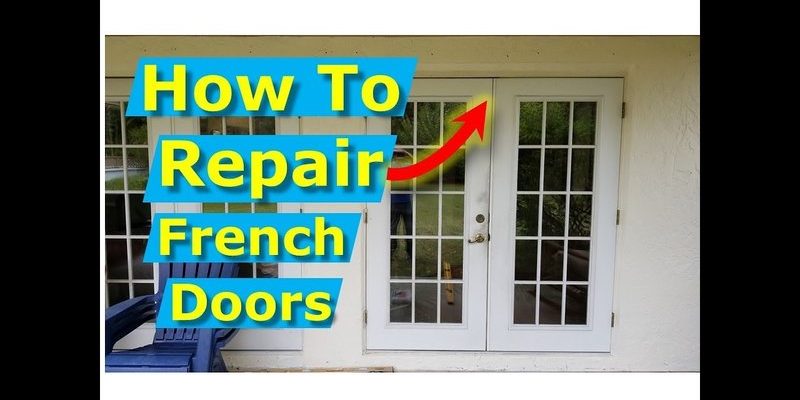
Understanding why your latch isn’t engaging both sides requires a little exploration. It could be due to misalignment, dirt, or even issues with the locking mechanism itself. In this guide, we’re diving into practical steps to help you identify and fix the problem. We’ll tackle everything from simple adjustments to more involved repairs, so you can get back to enjoying the lovely view without the hassle of a door that just won’t latch properly.
Identifying the Problem: Is Your Door Misaligned?
Before jumping into fixes, it’s important to pinpoint what’s causing the latch issue. Often, misalignment is at the root of the problem. Over time, doors can shift due to changes in temperature, humidity, or even settling of the house. You might wonder, “How do I know if my door is misaligned?” Here’s a quick way to check:
1. Inspect the Gaps: Look at the space between the door and the frame. If it’s uneven, the door is likely misaligned.
2. Check the Hinges: Tighten the screws on the hinges. Loose hinges can cause doors to sag, misaligning the latch.
3. Test the Lock: Engage the latch on one side and see if the other side remains unengaged.
If you notice any alignment issues, adjusting the hinges might be your first step.
Adjusting the Hinges for Better Alignment
Once you’ve confirmed misalignment, adjusting the hinges can often make a significant difference. This process may take a little elbow grease, but it’s usually straightforward. Here’s how to tackle it:
– Step 1: Use a screwdriver to tighten any loose screws in the hinges. Sometimes, simply tightening up can pull the door back into alignment.
– Step 2: If tightening doesn’t help, consider adding or removing shim material behind the hinge. Doing this can raise or lower the door slightly, allowing it to fit into place better.
– Step 3: Close and test the door after each adjustment. You’re looking for that satisfying click of the latch engaging on both sides!
If you notice improvement but still have issues, it might be time to check other components of the latch.
Cleaning and Lubricating the Latch Mechanism
Sometimes, all a latch needs is a little TLC. Dirt and grime can build up over time, preventing the mechanism from working smoothly. To clean and lubricate the latch:
1. Remove the Latch Plate: Use a screwdriver to take off the latch plate from the door frame.
2. Clean the Mechanism: Wipe any dirt or debris with a cloth. You might use a small brush for tough spots.
3. Lubricate the Mechanism: Apply a lubricant like silicone spray or graphite powder to the moving parts. Avoid using oil-based products, as they can attract more dust.
Once you’ve cleaned and lubricated, reattach the latch plate, test the door, and see if it engages properly.
When to Consider a Replacement Latch
If the latch still doesn’t engage both sides after alignment and cleaning, it might be time to consider a replacement latch. This usually happens if the latch is old, damaged, or malfunctioning. Here’s a quick guide on how to replace it:
– Step 1: Purchase a compatible latch assembly. Ensure it matches the color and design of your existing hardware for a seamless look.
– Step 2: Remove the old latch. Carefully take out the screws and replace any strike plates if needed.
– Step 3: Install the new latch following the manufacturer’s instructions. You can often find this in the packaging or online.
After installation, test it thoroughly. You want to make sure that it clicks into place without any fuss.
Understanding Different Types of Latch Mechanisms
Did you know not all latches are created equal? Depending on your door’s design, you might be dealing with different types of mechanisms. Here’s a quick rundown:
– Deadbolt Latches: These offer extra security and require a key or knob to operate.
– Spring-Loaded Latches: Common in many French doors, these automatically catch when you close the door.
– Sliding Bolts: Used for added security, these require manual locking.
Understanding the type you’re working with can inform how you troubleshoot and fix the latch. If you’re unsure about your latch mechanism, don’t hesitate to do a little research or consult a professional.
Key Troubleshooting Tips for French Door Latches
Even after following all these steps, you might still face issues. Here are some bonus troubleshooting tips to keep in mind:
– Check the Weather Stripping: Worn or misplaced weather stripping can affect how well your door closes.
– Inspect the Strike Plate: Ensure the strike plate is aligned with the latch. If it’s off, try adjusting its position.
– Look for Warping: Sometimes, doors can warp due to humidity or temperature changes. If that’s the case, you may need to replace the door.
Keeping up with these tips can help ensure your French door latch stays in good working order.
Fixing a French door latch that doesn’t engage both sides can seem daunting, but with a little persistence, most problems can be resolved. Whether it’s adjusting hinges, cleaning the latch, or considering a replacement, you’ve got the tools to tackle the job.
Next time you close your French doors, you can do so with confidence, knowing they’ll latch securely on both sides. So, roll up those sleeves and get to it—you’ve got this!
